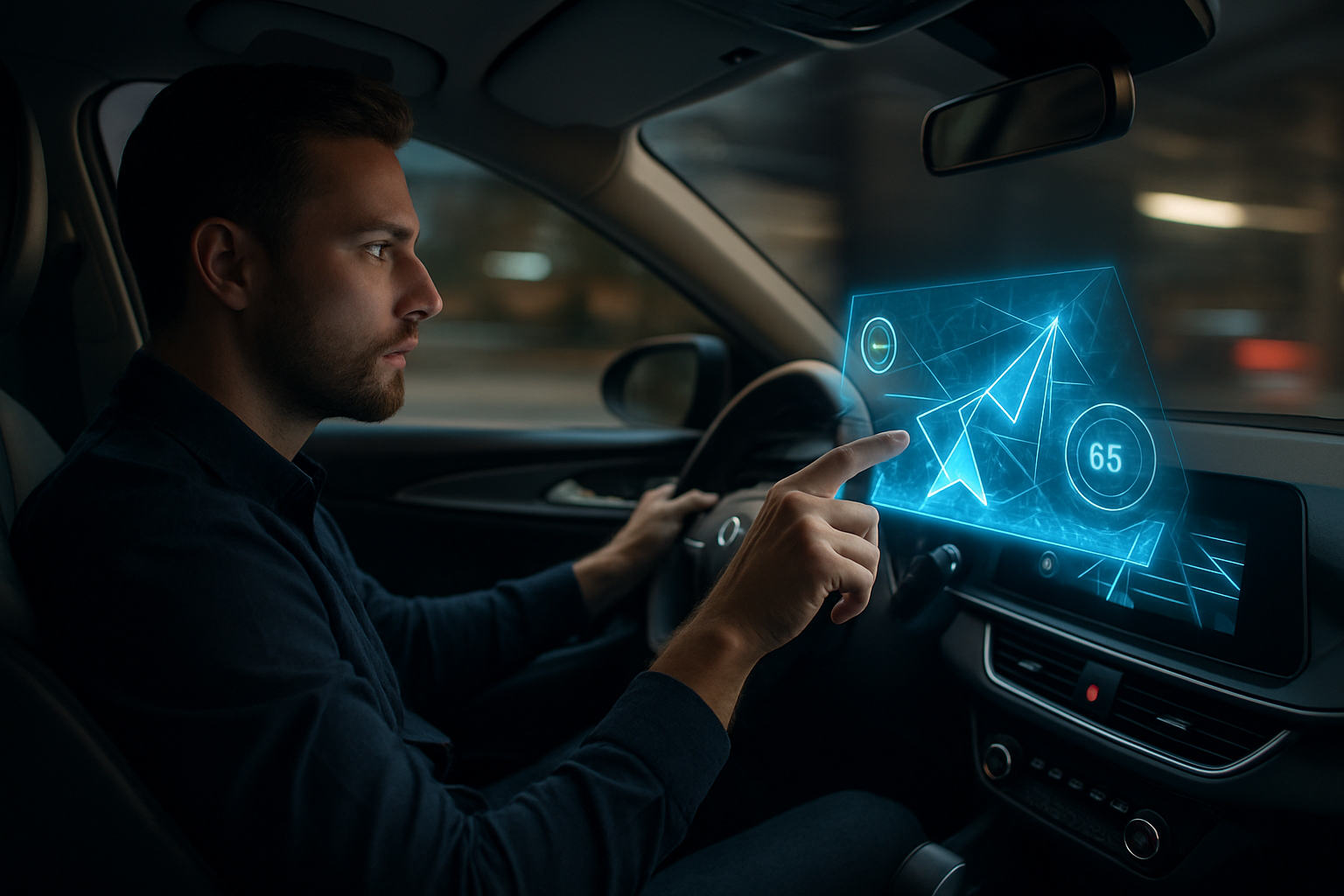Holographic Displays: The Future of Car Interiors
The automotive world is on the cusp of a visual revolution. As we race towards an era of increasingly connected and intelligent vehicles, the way we interact with our cars is undergoing a dramatic transformation. At the forefront of this change is the emergence of holographic displays, a technology poised to redefine the driving experience and reshape vehicle interiors. This cutting-edge innovation promises to blend the physical and digital realms, creating an immersive and intuitive interface between driver and machine.

The concept of holograms dates back to the 1940s, but it’s only in recent years that the technology has matured enough for practical applications in vehicles. Early experiments with holographic heads-up displays (HUDs) paved the way for more advanced systems. Today, automotive engineers are working tirelessly to integrate full-fledged holographic interfaces into production vehicles, promising a paradigm shift in how we perceive and interact with our cars.
The Technology Behind the Magic
At the heart of automotive holographic displays lies a complex interplay of optics, lasers, and advanced computational algorithms. Unlike traditional flat screens, holographic systems project light patterns that converge to form three-dimensional images in space. This is achieved through a combination of spatial light modulators, which control the phase and amplitude of light waves, and sophisticated software that calculates the precise interference patterns needed to create convincing 3D visuals.
One of the key challenges in developing holographic displays for cars has been creating systems that are compact enough to fit within the limited space of a vehicle interior while still producing high-quality, bright images visible in various lighting conditions. Recent advancements in micro-LED technology and nanophotonic materials have been instrumental in overcoming these hurdles, allowing for the creation of smaller, more efficient holographic projectors.
Enhancing Safety and User Experience
The implementation of holographic displays in vehicles goes beyond mere visual spectacle; it has the potential to significantly enhance both safety and user experience. By projecting crucial information directly into the driver’s line of sight, holographic systems can reduce the need for drivers to take their eyes off the road. This could include everything from speed and navigation data to collision warnings and blind spot alerts, all presented in an intuitive, three-dimensional format that’s easier to process quickly.
Moreover, holographic interfaces open up new possibilities for gesture-based controls, allowing drivers to interact with their vehicle’s systems through natural hand movements. This could lead to a reduction in physical buttons and knobs, creating cleaner, more streamlined interiors while also minimizing driver distraction. The technology also holds promise for passengers, offering immersive entertainment options and the ability to access information about their surroundings in a visually engaging way.
Challenges and Considerations
While the potential of holographic displays in automobiles is immense, the technology is not without its challenges. One of the primary concerns is ensuring that the displays remain visible and functional under all lighting conditions, from bright sunlight to nighttime driving. Engineers are exploring advanced light management techniques and adaptive brightness controls to address this issue.
Another consideration is the computational power required to generate and render complex holographic images in real-time. This demands significant processing capabilities, which could impact vehicle design and energy consumption. As such, automotive manufacturers are partnering with tech companies to develop specialized hardware and software solutions optimized for in-vehicle holographic systems.
The Road Ahead: Integration and Adoption
As holographic display technology continues to mature, we’re likely to see a gradual integration into production vehicles. Luxury automakers are expected to lead the charge, introducing holographic elements in high-end models as early as the mid-2020s. These initial implementations may focus on enhancing existing heads-up displays with more advanced 3D capabilities before expanding to full-fledged holographic dashboards.
The widespread adoption of holographic displays in mainstream vehicles will depend on several factors, including cost reduction, technological refinement, and consumer acceptance. As with any new technology, there will likely be a period of adjustment as drivers become accustomed to interacting with holographic interfaces. However, the potential benefits in terms of safety, functionality, and user experience suggest that holographic displays could become a standard feature in cars of the future.
Reimagining Vehicle Design
The advent of holographic displays has the potential to fundamentally alter vehicle interior design. Traditional instrument clusters and infotainment screens could become a thing of the past, replaced by customizable holographic projections that can be tailored to individual preferences. This shift could lead to more spacious and versatile interiors, as well as new opportunities for personalization and branding.
Furthermore, the technology opens up possibilities for augmented reality applications within the vehicle. Imagine navigation directions overlaid on the actual road ahead, or points of interest highlighted as you drive past them. These features could transform the way we experience our journeys, blending the digital and physical worlds in unprecedented ways.
As we stand on the brink of this holographic revolution in automotive design, it’s clear that the future of car interiors is bright, multi-dimensional, and full of possibilities. While challenges remain, the potential benefits of this technology are too significant to ignore. As automotive and tech industries continue to converge, holographic displays are set to play a pivotal role in shaping the next generation of vehicles, promising a driving experience that is safer, more intuitive, and more immersive than ever before.





